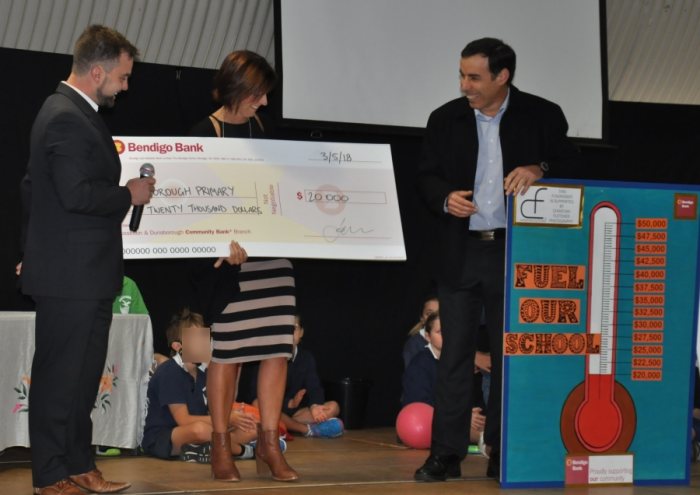
Image: Dunsborough Primary School
Dunsborough Primary School in Western Australia has set a goal of running on 100% renewables, and solar power will make a significant contribution.
Dunsborough is a coastal town situated 254 kilometres south of Perth on the shores of Geographe Bay.
The primary school’s P&C recently kicked off an initiative called “Fuel Our School” to fund an expanded solar installation. The first stage involves upgrading the current 8kw array to a 27kw system by adding another 80 solar panels to the school’s assembly area rooftop.
“This stage which is fully supported by the School Board, P&C and the staff, based on current electricity charges, would save the school approx. $5000 in power costs annually as well as demonstrating the strong commitment our school community has to operating as sustainably as we possibly can,” states a school news item.
The school may be in for a pleasant surprise, as adding another 19kW could provide better returns than a $5,000 annual reduction in electricity costs, but it depends on a number of factors.
The nice folks at the local branch of Bendigo Bank became aware of the project and kicked in $20,000 earlier this month to get the ball rolling. Other fundraising efforts include Christian Fletcher, an award winning landscape photographer, donating the proceeds of the sale of 100 limited edition prints.
“This is the brainchild of Dunsborough Local Michael Baldock, a member of NREG (The Naturaliste Renewable Energy Group),” says Mr. Fletcher. “It has been our aim to encourage the uptake of renewable energy in the South West and we hope to roll this concept out to other towns and school (sic) along the way.”
If the funding target is exceeded, then phase two will consist of further expanding solar capacity or adding a battery system.
NREG has also been active in the local community promoting PV through initiatives such as a bulk buy program.
Solar is very popular in the area, with approximately 855 grid connected solar power systems in postcode 6281 among a population of just over 7,200. Capacity per capita works out to around 440 watts, which is well above the Australian average of approximately 280 watts.
Dunsborough Primary School’s original solar installation was supported by a National Solar Schools Program grant, making it one of nearly 5,000 schools across Australia to install solar panels under the NSSP.
While the NSSP program ended in 2013, schools can still take advantage of Australia’s major solar subsidy, which knocks thousands off the up-front cost of acquiring a commercial solar power system. With the cost of solar panels and other components reducing significantly in recent years, schools can install far more capacity for the same money. And if they can get creative like Dunsborough’s supporters, buying a system may not impact the school budget at all.

 RSS - Posts
RSS - Posts



I think the question needs to be asked – why is this (and, installation of adequate rooftop photovoltaic systems, with battery storage to provide for backup power supply, on all state government public schools), not being wholly funded by the state government?
It is about time that the state government started using the state’s funds for public use, rather than using the state’s funds to line the pockets of the members of the state parliament.
And, investing state funding into providing as much usage of solar energy as possible, for state public schools, would save money in the running costs of the schools, so, it is in the interest of the state government, to invest heavily in providing rooftop photovoltaic systems on all of the appropriately oriented roof faces of all of the buildings of all of the state public schools, with battery storage to proovide for backup power.
And, it could provide for an interesting activity, for the school children to monitor and analyse the photovoltaic electricity generation and the electricity usage, at their particular schools, as part of their STEM education, and, it could also inspire more students, to be interested in STEM education.